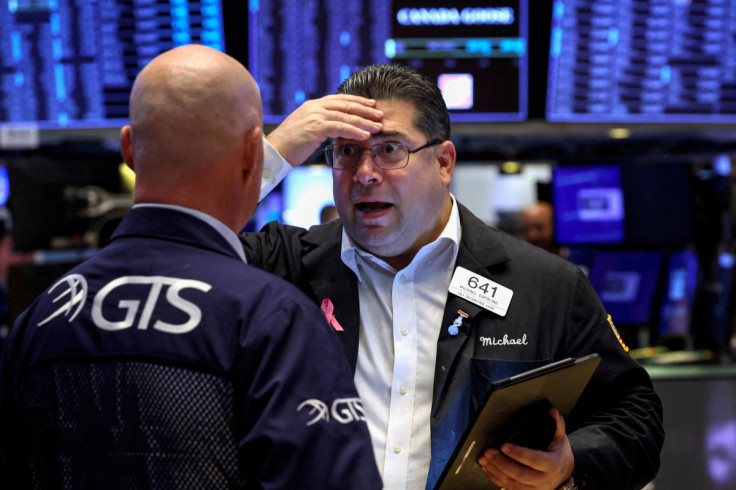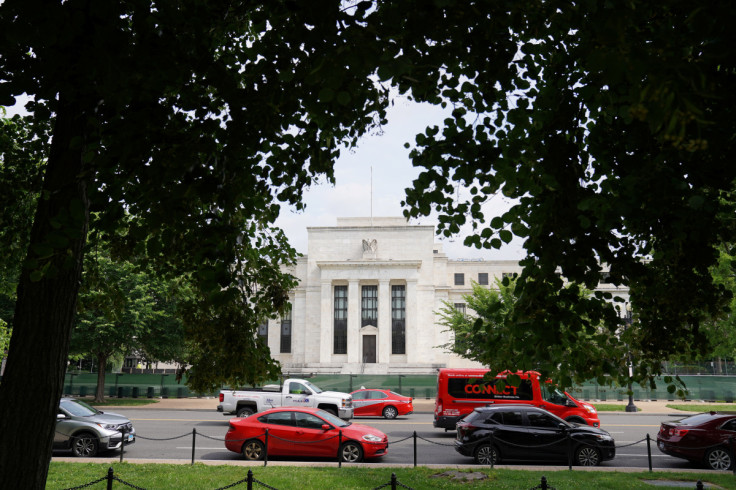Analysis-As Markets Fret, Fed Officials Reject Idea Of Rising Financial Stability Risks

Federal Reserve officials are pushing back on investors' mounting concerns that the U.S. central bank's aggressive campaign to counter high inflation is setting the stage for a market crack-up.
Central bankers' confidence is countered by wide-ranging fears among market participants who see bond market liquidity strains, damaging asset price declines as well as a range of problems in markets abroad. Some see this landscape as dire enough to call for the Fed to slow or even consider stopping its interest rate increases, something officials have so far shown no appetite for as they contend with the worst inflation surge in 40 years.
"We have to be monitoring things in the financial markets, and we have to be looking for vulnerabilities as you're increasing rates," Cleveland Fed President Loretta Mester told reporters on Tuesday, especially in an environment where all the world's major central bankers are moving in the same direction toward tighter monetary policy.
"That's when these vulnerabilities that you don't necessarily see in normal times, and you're not changing rates, can come out," Mester said. But as things now stand, "I don't see hidden big pending risks out there" and "there's no evidence disorderly market functioning is going on at present."
So far, Fed liquidity tools have shown no signs of market distress. Foreign central banks have not tapped a tool that lends dollars in any notable size, and other lending facilities have yet to see any unusual activity. A measure of market stress produced by the St. Louis Fed suggests financial stress is below average.
The view outside the Fed is quite different, however.
"Global markets are increasingly showing signs of instability," said Roberto Perli, head of global policy research at Piper Sandler. "The most prominent example is the U.K., where the Bank of England has already been forced to intervene to shore up pension funds, but creaks are showing up in Europe, (emerging markets), and in the U.S. as well."
Tobias Adrian, the International Monetary Fund's monetary and capital markets director, wrote on Tuesday that financial stability risks have risen "substantially." Adrian, who used to work at the New York Fed, flagged mounting signs of trouble for global government debt markets at a time when borrowing levels are high. Risk-taking is also on the decline and thin markets run the risk of propagating any shocks that should arise, Adrian said.
What's more, the pressure on markets may get even more pronounced as major central banks continue to make the cost of credit more expensive.
ROOM TO GET TIGHTER
Financial conditions have undergone a rapid tightening this year and have plenty of room to get even more restrictive, new Bank of America data says. It said its newly launched Indicator of U.S. Financial Conditions shows the speed of the tightening may be more notable than the actual level of tightness, which so far remains below that of other episodes of turbulence.
The index has climbed from neutral to current levels in 10 months. That took five years in the Fed's last rate-hike cycle.
"If prior cycles are any guide, financial conditions can get tighter - and may need to - to generate the softening in labor market conditions that the Fed desires, particularly in an environment where re-opening forces are generating exceptionally strong labor demand," Bank of America economists wrote.
The Fed has pushed its overnight target rate range up at a pace that breaks with the gradual approach used in recent decades. Fed officials have lifted the federal funds rate from near-zero levels in March to the current range of between 3.00% and 3.25%.
Financial markets expect the Fed to raise the rate again by three-quarters of a percentage point at its next policy meeting in November. More rate rises are very likely after that, with central bankers penciling in a 4.6% federal funds rate by some point in 2023.
Making financial conditions more restrictive is key to how monetary policy operates. By lifting the cost of credit and making risk-taking and investment more expensive, the Fed cools overall economic momentum and lowers inflationary pressures.
On Friday, a top Fed official said monetary policy may be taking a bigger bite out of economic momentum than many recognize. New York Fed President John Williams said so-called neutral interest rates are "just much lower now" than in the recent past. That means in real terms, the current federal funds rate is "actually tighter monetary policy than that would be, say in the early 90s or something like that."
It remains unclear how the Fed might respond to market trouble. Financial stability is core to its mission, so a big meltdown would likely garner some sort of reaction. San Francisco Fed President Mary Daly said last week "we definitely don't raise rates until something breaks."
But Fed Governor Christopher Waller, speaking last week, said he was "a little confused" by the worries over financial stability risks. "While there has been some increased volatility and liquidity strains in financial markets lately, overall, I believe markets are operating effectively," he said, adding that he doubted a market issue would affect the rate rise outlook.

© Copyright Thomson Reuters {{Year}}. All rights reserved.





















